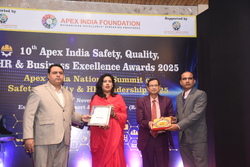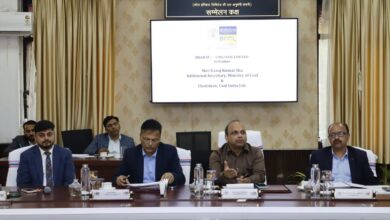Decentralised Wastewater Treatment Can Make Reuse Of Wastewater A Reality
Wastewater isn’t a liability, but a resource, opines Dr. Seema Javed, an environmentalist & a communications professional in the field of climate and energy

PICTURE COURTESY : Seagrass Technologies
Water quality in rivers is deteriorating in urban and rural areas not only in India but in most of the developing countries. Five of the most polluted rivers of the world include – Ganga And Yamuna of India, Pasig river of Philippines, Ravi river of India & Pakistan and Citarum river of west Java (Indonesia) which has been identified as one of the most contaminated rivers globally It was identified as largest contributor of plastic waste to Oceans.
Recently, the National Green Tribunal (NGT) issued notices to Uttarakhand and Jharkhand, seeking explanations for why sewage treatment plants (STPs) remain non-functional and untreated effluents continue to pollute the Ganga River. A compliance affidavit by the Uttarakhand Pollution Control Board disclosed that most STPs were not meeting norms and were frequently found non-operational. This contradicts claims by the Jal Shakti Ministry, which had earlier stated that water quality met bathing criteria across Uttarakhand and Jharkhand stretches of the Ganga.
With melting glaciers due to climate change and contamination of rivers- the fresh water resources, water scarcity is a pressing global concern, with particularly dire implications for a water-rich country like India. As the demand for water continues to rise due to population growth, urbanisation, and industrialisation, the supply of freshwater sources remains limited.
65% of all reservoirs in India reported below normal water level. Assessment of water quality over the years revealed that in the year 2015, 70% of rivers monitored (275 out of 390) were identified as polluted whereas, in the year 2022, only 46% of rivers monitored (279 out of 603) are identified as polluted. According to the Central Pollution Control Board (CPCB), the number of polluted river stretches has dropped from 351 in 2018 to 311 in 2022.
Of the 180 stretches out of the 351 flagged as polluted in 2018, water quality improved in all—106 were removed from the polluted list entirely, while 74 were downgraded to a lower-risk category. In 2015, 70% of monitored rivers (275 out of 390) were classified as polluted. By 2022, that figure had dropped to 46% (279 out of 603), according to government assessments. As many as 81 rivers and tributaries of the country have extremely high concentrations of one or more trace and toxic heavy metals, the study by the Central Water Commission (CWC) indicated.
The report based on monitoring of samples from 10 river basins of India for the nine toxic heavy metals showed the presence of arsenic, mercury and chromium in 30, 18 and 16 stations across 14, 11 and 16 rivers, respectively. According to the report, the heavy metals detected beyond safe limits included arsenic, cadmium, chromium, copper, iron, lead, mercury and nickel.
Water is becoming a major challenge for most Indian cities. In 2018, a Niti Aayog report pointed out that India is suffering the worst water crisis in its history and that 600 million people – almost half the country’s population – face high to extreme water stress.
As urbanization proceeds apace, water resources dwindle, and rainfall becomes more unpredictable, each city will need to explore a variety of options to augment its water supply, depending on its geographic, geological, and socio-economic conditions.
One of the biggest reasons rivers stay polluted is the unchecked dumping of untreated sewage according to the experts. Cities along riverbanks routinely release waste directly into the water and across states, this has become business as usual.
After the unsuccessful attempts to clean Ganga & Yamuna rivers by Ganga Action plan, The Government had launched the Namami Gange project in 2014, to effectively combat pollution, conserve the river, and rejuvenate its ecosystem. Namami Gange” project has been launched to clean Ganga and its tributaries to provide safe drinking water to people of the country. The program focuses on various aspects like sewage treatment, industrial monitoring, and afforestation.
Wastewater isn’t a liability, but a resource. A comprehensive water conservation and management policy is the need of the hour. Shifting the thinking from a supply-driven approach to an integrated urban water management system should be key. Water reclamation is a process which is being implemented and incorporated in newly constructed urban housing systems of metro cities in India . But it’s a far cry from being a part of every household , in every city of India. Recycling water and wastewater has a positive impact on the environment as it reduces dependence on freshwater supplies and reduces the amount of wastewater released into the environment.
Water recycling is beneficial from an operational standpoint because it reduces waste and provides a continuous supply of clean water. You can operate a more efficient business that replenishes your resources by recycling the wastewater and wastes you create on-site. Finally, water recycling provides a sensible means of reducing new water consumption while meeting demand, which is important for manufacturing and industry. Decentralised treatment, strong regulatory control, and public confidence-building will help India realise the possibilities of wastewater reuse.
The writer of this article is Dr. Seema Javed, an environmentalist & a communications professional in the field of climate and energy




